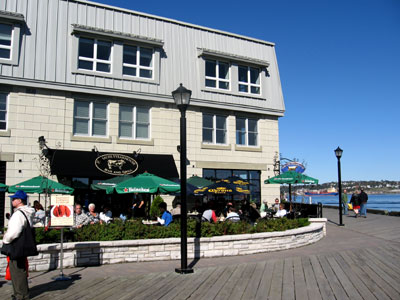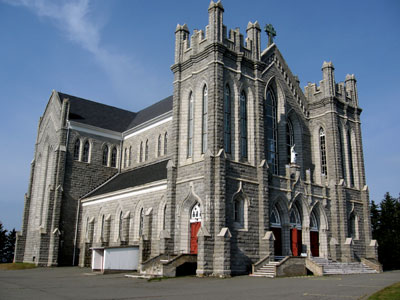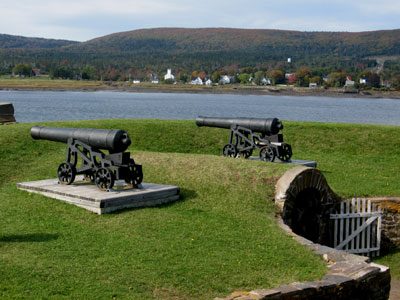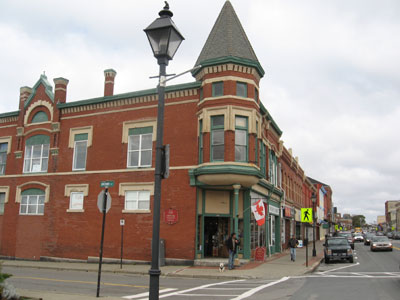My Halifax City Tour, expertly narrated by Allen Mackenzie, a passionate Haligonian in a kilt, had provided me with a great overview of this city, and my visit to the Maritime Museum of the Atlantic had added to my knowledge of Halifax, particularly of its connection to the Titanic and the 1917 Explosion. Still mulling over the historic significance of this city, the largest population centre on Canada’s East Coast, I sat down close to the waterfront to finally have lunch and strengthen myself after an intense introduction to the city.
On this sunny, fairly warm day I had a seat on the outdoor patio of Stayner’s Wharf, one of the restaurants on the Waterfront, located right next to the Halifax – Dartmouth Ferry Terminal. I was finally able to catch a rest, relax in the autumn sun and get ready for my lunch. I ordered the “Captain’s Brunch”, a pan-seared brunch-size portion of Atlantic salmon with one lightly fried egg, creamy whipped potatoes topped with a bit of Hollandaise sauce, served with a slice of tomato and cucumber. It was a very satisfying lunch, looking out onto Halifax’ waterfront, with a view of the Theodore Too, Halifax’ famous TV-show inspired tugboat.

A well-deserved lunch by the water
I took about half an hour before I got up and made my way southwards on the Harbourwalk, Halifax’s 3.8 km boardwalk that stretches all the way from Casino Nova Scotia in the north to the Pier 21 National Historic Site in the south. More than 2.5 million visitors walk the Harbourwalk annually. $31 million were invested in order to purchase and rejuvenate properties and to renew infrastructure. The Harbourwalk is composed of a series of public parks, wharves and plazas all connected by a boardwalk system that is primarily wooden to reflect the historic marine character of Halifax’s waterfront which is now easily accessible to the public. People were out in full force, enjoying the pleasant weather. Several street comedians were performing right next to the waterfront, drawing huge crowds of onlookers.
The Halifax Harbour actually is one of the world’s best natural harbours as it extends almost 20 km inland into the Bedford Basin. Several islands are located in the harbour. The closest to the harbour entrance is George’s Island which has been designated a National Historic Site although it is not currently accessible to the public. This island has long played an important role in the harbour’s defense system.

Halifax Harbourwalk
McNabs Island is located farther out in the harbour and is accessible via a ferry from the Eastern Passage or via a charter boat from Cable Wharf. This island was settled in the past although the homesteads are now abandoned. A lighthouse, ruined fortress and batteries as well as sand beaches can be found on McNabs Island. One more island, Lawlor’s Island, is located close to the mainland. It never had any military installations and today is a protected nature area.

A replica of the Deportation Cross at the Grand Pré
The Halifax harbour also features a deportation cross, reminiscent of the famous deportation cross at the Grand Pré, the original deportation site of the Acadian Expulsion. And being Canada’s major seaport on the east coast, it has always had a strategic military role and even today features key military installations.
As I was walking along Harbourwalk, I saw various ships passing in and out of the narrow passage, but the most interesting one was a military submarine, with all the sailors standing on deck, often waving to the fascinated audience on land. I was wondering when the sailors would disappear below deck, but I lost sight of them as I walked southwards towards the pier buildings.

A submarine sails out towards the Atlantic




